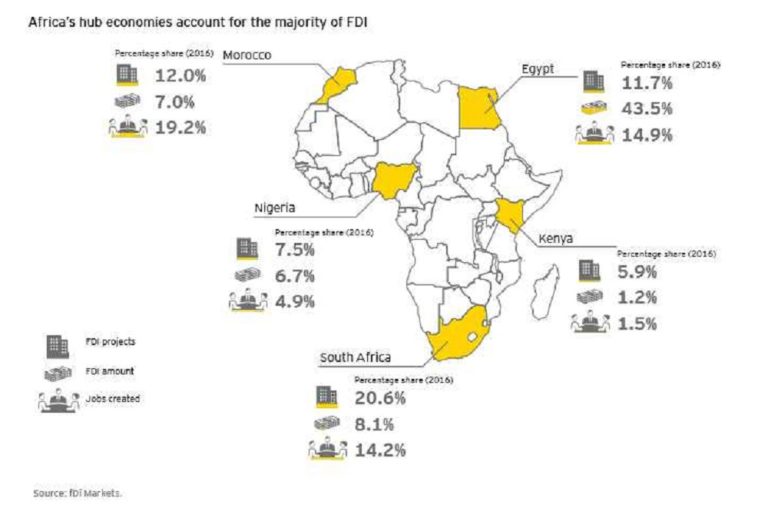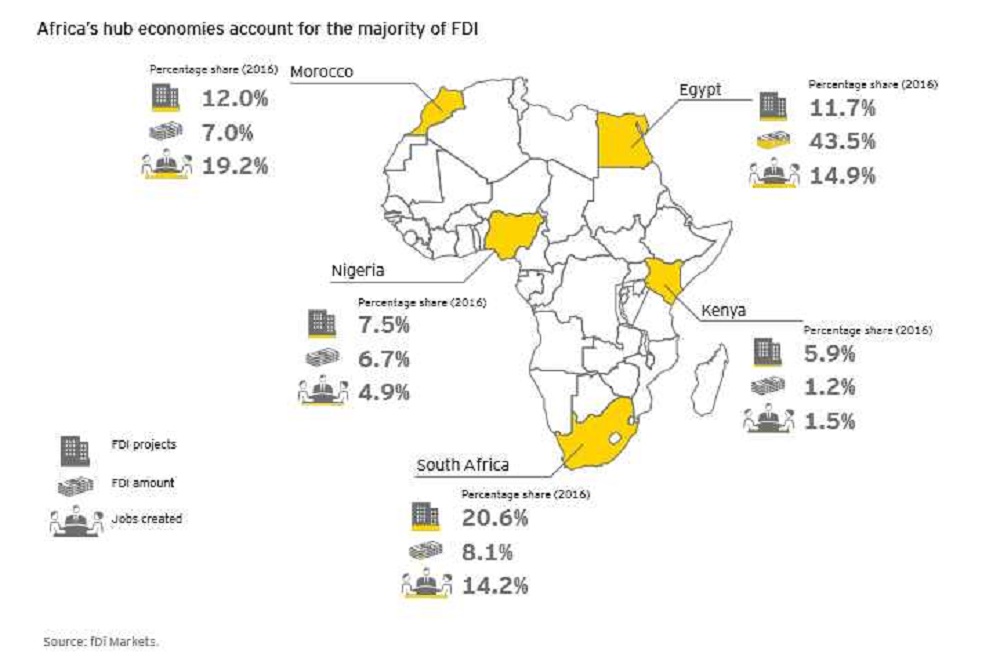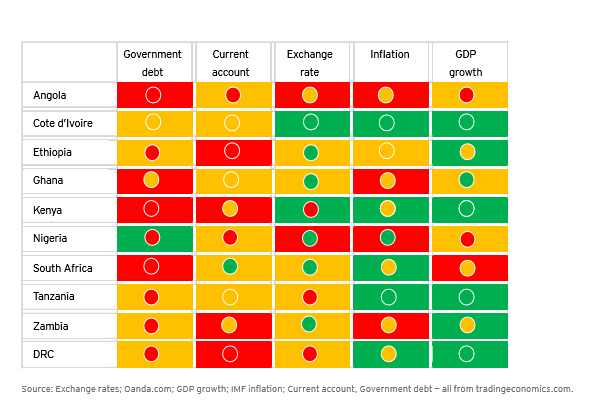
Low growth was largely driven by external factors, particularly oil prices, which meant two of the largest three economies in Sub-Saharan African (SSA), i.e. Nigeria and Angola, had to accept lower receipts for their exports.
As a result, both economies fell into recession, with Nigeria hit particularly hard, as the nation dealt not only with reduced terms of trade, but with lower production levels as a result of domestic insurgency.
South Africa’s growth in 2016 was only marginally positive (0.3%), while Angola’s growth for the year is likely to be flat. All three of these economies are expected to grow more strongly in 2017, although each one is dependent on a combination of global commodity price recovery and structural economic reform.
At the other end of the spectrum, Cote d’Ivoire remains one of the fastest growing countries globally, although once again, highly dependent on commodity (cocoa) prices, and its ability to manage internal conflict. Staying in West Africa, Ghana’s prospects are also looking increasingly promising, with a newly elected administration promising to manage the public purse more prudently.
Register for Tekedia Mini-MBA edition 17 (June 9 – Sept 6, 2025) today for early bird discounts. Do annual for access to Blucera.com.
Tekedia AI in Business Masterclass opens registrations.
Join Tekedia Capital Syndicate and co-invest in great global startups.
Register to become a better CEO or Director with Tekedia CEO & Director Program.
East Africa remains the most buoyant of all, with the four key economies (Kenya, Ethiopia, Tanzania and Uganda) all poised for growth of 6% and above for the decade.

For most of the sub-continent, inflation has peaked and is declining, allowing the space for central banks to ease interest rates. This in itself will add stimulus to economic growth, and should interest rates at the very least remain stable, consumer disposable income will support even stronger growth through 2017.
However, there are a number of risks that need to be managed. Countries with high and rising twin fiscal and trade deficits remain at risk of currency devaluation. This becomes all the more evident where national debt levels are either rising too rapidly or are already at high levels. Mozambique is the most notable example, although this has not impacted its growth outlook.
Commodity prices are also key to growth assumptions. Oil prices have fallen back to US$50 after trading at US$55 in the first two months of 2017. Price moves will depend on OPEC’s ability to get member countries to agree to production levels. China remains critical to commodity prices more broadly, as its recent slowdown in economic growth rate has already illustrated. Given these unknowns, policy certainty and economic reform are critical to stimulating growth and reducing the impact of exogenous influences.
Africa remains on track to be a US$3t economy. To achieve that will require accelerating diversification initiatives thereby boosting resilience to external shocks.

• The color of the individual block represents the long- term position for that metric on a scale of green being more positive to red being more negative.
• The color of the circle in the block represents the current trend
The traffic light illustrates an improving inflation outlook, more stable exchange ratesand stronger growth prospects. Rising national debt and large current accounts are the risks most common to the large SSA economies. Longer term, growth prospects remain robust. More and more countries will grow at 3% or above per annum, with a record number of high-growth economies more than 5% per annum. Between 2001 and 2015, there were 14 such countries. This number is expected to rise to 19 by 2030. At the same time, the number of countries growing on average between 3%–4.9% per annum holds constant at 17.



